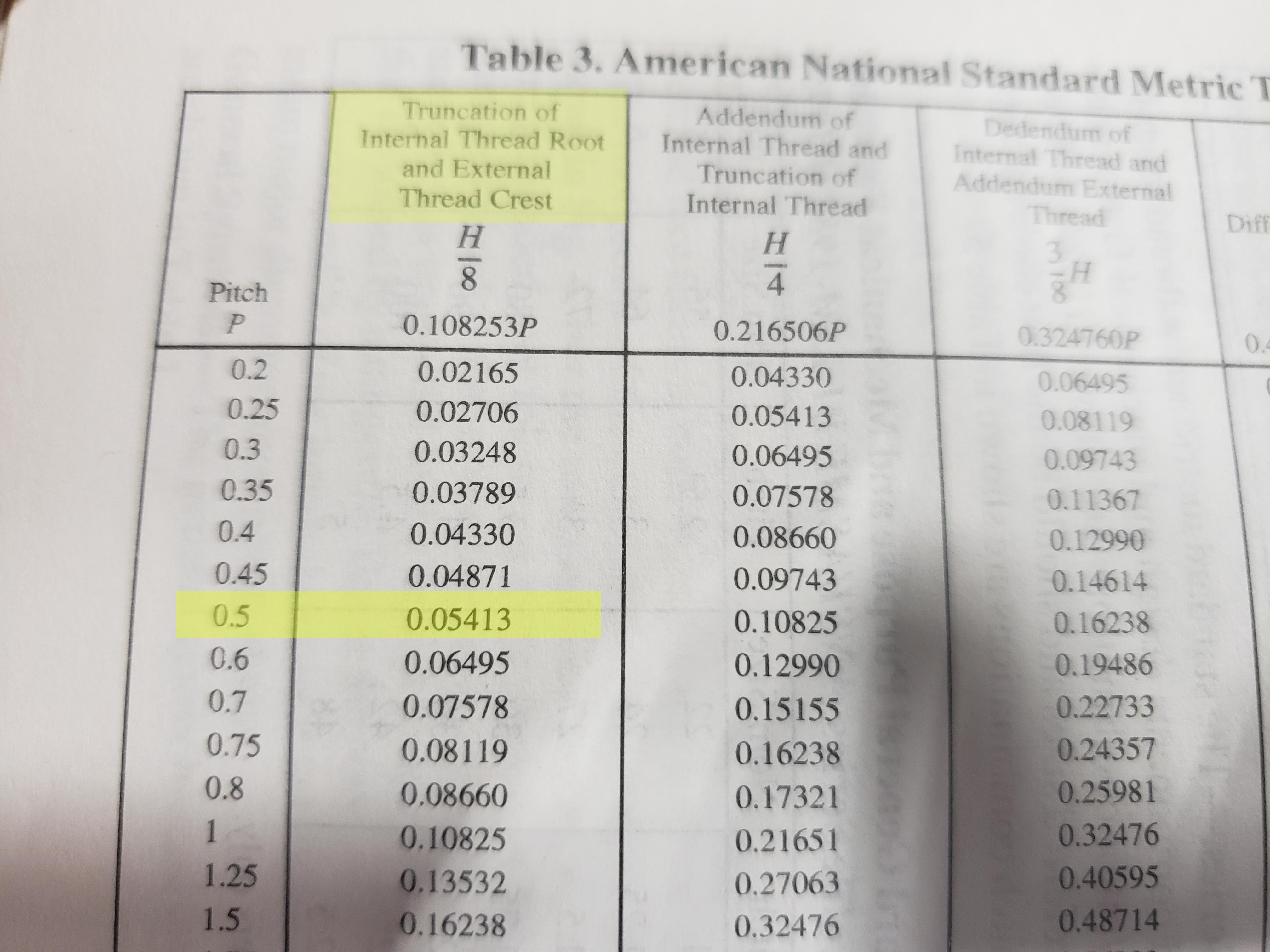I need to cut a 22mm x .5 internal thread, 1.1 inches long, in 6061 aluminum.
.5mm pitch works out to approximately 50.8 tpi.
Looking at the Micro 100 catalog, I find product IT-2901250. This is a right hand threading bar, maximum bore depth 1.25”, minimum bore diameter .290, nose radius .002”. So far, so good. Thread range is listed at 14-40 tpi. Why 40? The nose radius is small enough for what I need, they have other tools with the same radius, listed for up to 76tpi, but they aren’t long enough. What other dimension should I be looking at?
.5mm pitch works out to approximately 50.8 tpi.
Looking at the Micro 100 catalog, I find product IT-2901250. This is a right hand threading bar, maximum bore depth 1.25”, minimum bore diameter .290, nose radius .002”. So far, so good. Thread range is listed at 14-40 tpi. Why 40? The nose radius is small enough for what I need, they have other tools with the same radius, listed for up to 76tpi, but they aren’t long enough. What other dimension should I be looking at?
Last edited:



